
(Review archived from February 8, 2023)
I tend to get a little bit compulsive where it comes to playing game series in the order of release. I enjoy seeing the iterative changes to series over time, as it affords the opportunity to discern the philosophy and thought processes that went into the production of a game. What attempts were made to improve upon the previous entry? Were bold experiments made in an attempt to shake up the formula? Any noticeably dips in quality from one entry to the next? That sort of thing.
Red Dead Revolver then is a bit of an interesting precursor to what would come afterwards. Because really … this game has almost nothing to do with the other Red Dead Redemption games beyond the fact that they share a Wild West setting and feature the words ‘Red Dead’ in their titles. The conventional wisdom with regards to Red Dead Revolver is that it began development at Angel Studios working under Capcom as publisher. What I only recently learned though is that the game’s concept was the brainchild of Yoshiki Okamoto who at Capcom is known for his involvement on a number of classic Capcom (and Konami) titles. Notably for the purposes of this discussion is that he was principle designer on Gun.Smoke, the overhead Wild West shooter most notably released by Capcom as an arcade machine and on the NES. I have to wonder if Red Dead Revolver had been published by Capcom as originally planned, whether it would have been released as a Gun.Smoke reboot.

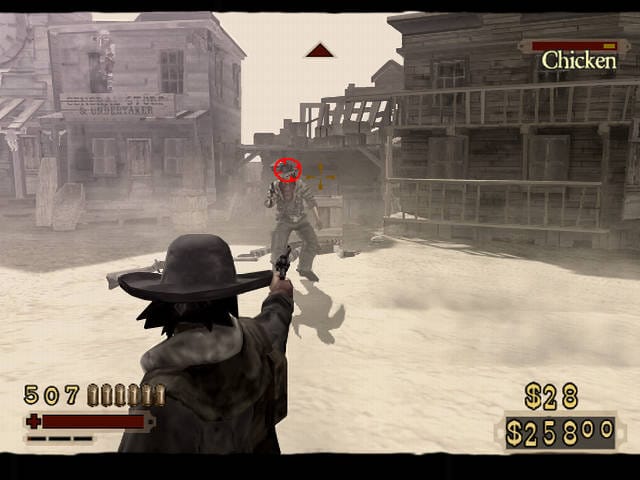
But that was not to be. Rockstar Games bought up the soon to be defunct Angel Studios, rebranded them as Rockstar San Diego, put their unique (at the time) ‘Rockstar touch’ into the partially completed version of Red Dead Revolver, and the rest is (Old West) history. I have a feeling that Rockstar was responsible for the heavy Spaghetti Western vibes present throughout the game. It’s a nice touch as it adds an almost Quentin Tarantino-esque atmosphere to the proceedings. What I mean is that there are some outlandish elements in the game which might seem a little laughable if not for a bit of ‘so goofy it’s cool’ aesthetic layered on over the top (I feel like Rockstar was pretty deft at creating this sort of atmosphere during this era). One of the main villains literally has a cannon for an arm. There’s an entire level based around a circus of evil midget clowns. Another boss carries his own coffin on his back … which also conveniently houses a gatling gun (an element pretty much ripped whole cloth from one of my favorite Spaghetti Westerns – Django, Prepare a Coffin – I guess this also brings it around full circle as a Venn Diagram between this game, Quentin Tarantino, and the Spaghetti Western genre). These are all elements that make a lot of sense in terms of my Gun.Smoke theory, which true to its arcade lineage, featured some pretty outlandish bosses of its own. But I suspect these aren’t elements that would make as much sense in a later RDR game given the slightly more serious tone of those games. So reframing the whole thing under a the outlandishness of a Spaghetti Western veneer was a pretty savvy move, IMO.
Speaking of which, one standout element for me was the soundtrack which is full of fantastic Spaghetti Western inspired jams that would feel perfectly suitable for a midday summer movie marathon of cheaply made 70’s Westerns. I loved this aspect.
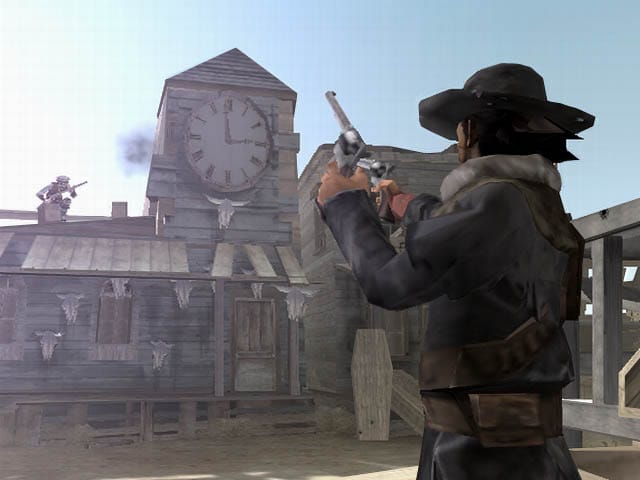
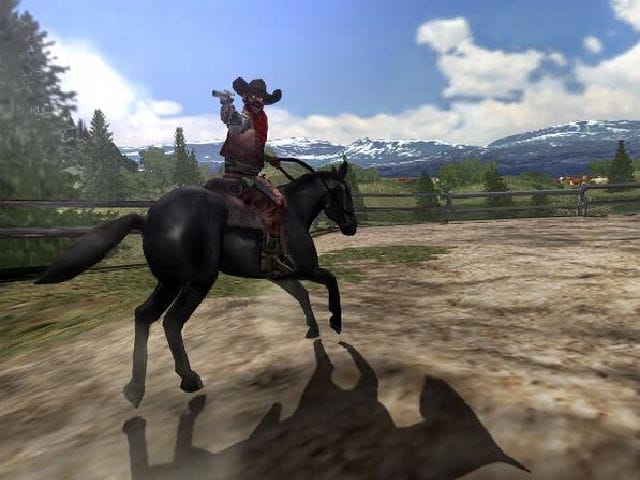
So let’s talk gameplay for a sec. It’s … fine. There’s a certain ‘feel’ that I think most Rockstar games from this era share (primarily Bully and the PS2 GTA games). Like … everything feels perfectly serviceable, but never quite fully dialed in, if that makes sense. A herky-jerky kind of jank that while never game breaking, never quite fully clicks either. At any rate, love it or hate it, that game feel makes an appearance here as well.
Having said that, the Deadeye mechanic has its inception here which is actually pretty killer (though I couldn’t say with certainty how closely it resembles this mechanic in later RDR games). Here Deadeye works a bit like ‘bullet time’ insofar as it puts the proceedings into slow motion while you place target reticules on your opponent(s). Then once you snap out of deadeye, you unleash hell according to the targets you placed. It’s particularly enjoyable during the quickdraw showdown segments interspersed throughout (although towards the end of the game you have to be nearly perfect in your execution lest you be shot down yourself).
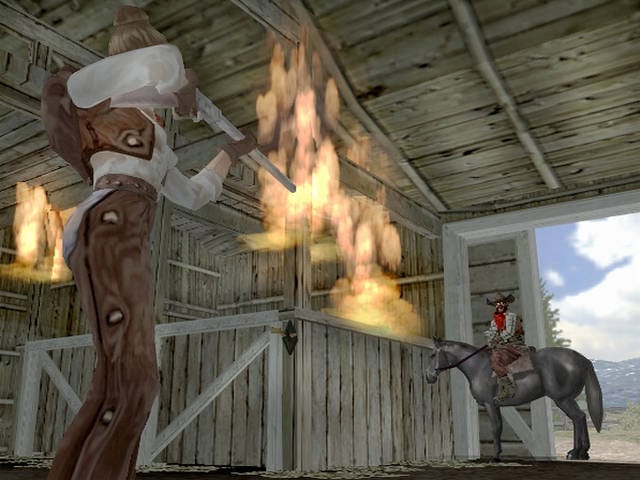
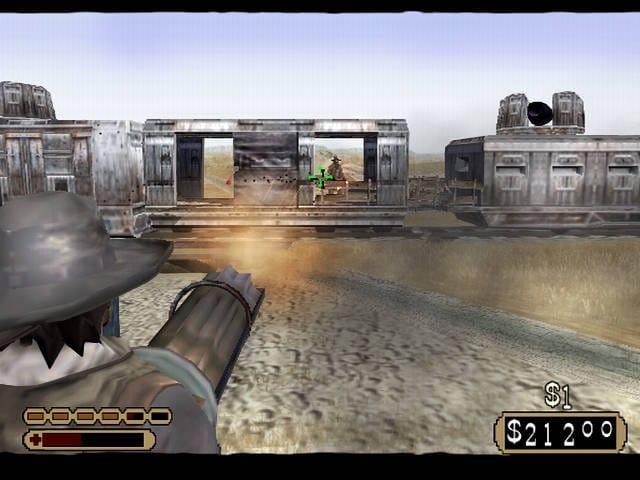
All told this is a bit of a middling game. It certainly doesn’t live up to the epic grandeur of the later RDR titles, but again, this one is really kind of its own deal – part of an entirely different lineage, if you will. If anything this game is much closer to GUN (its closest contemporary in this niche) than to either of the later Red Dead branded games. Still and all, it’s worthwhile if you enjoy the Old West setting, or if like me, you feel compelled to explore popular series in their entirety.
Leave a Reply